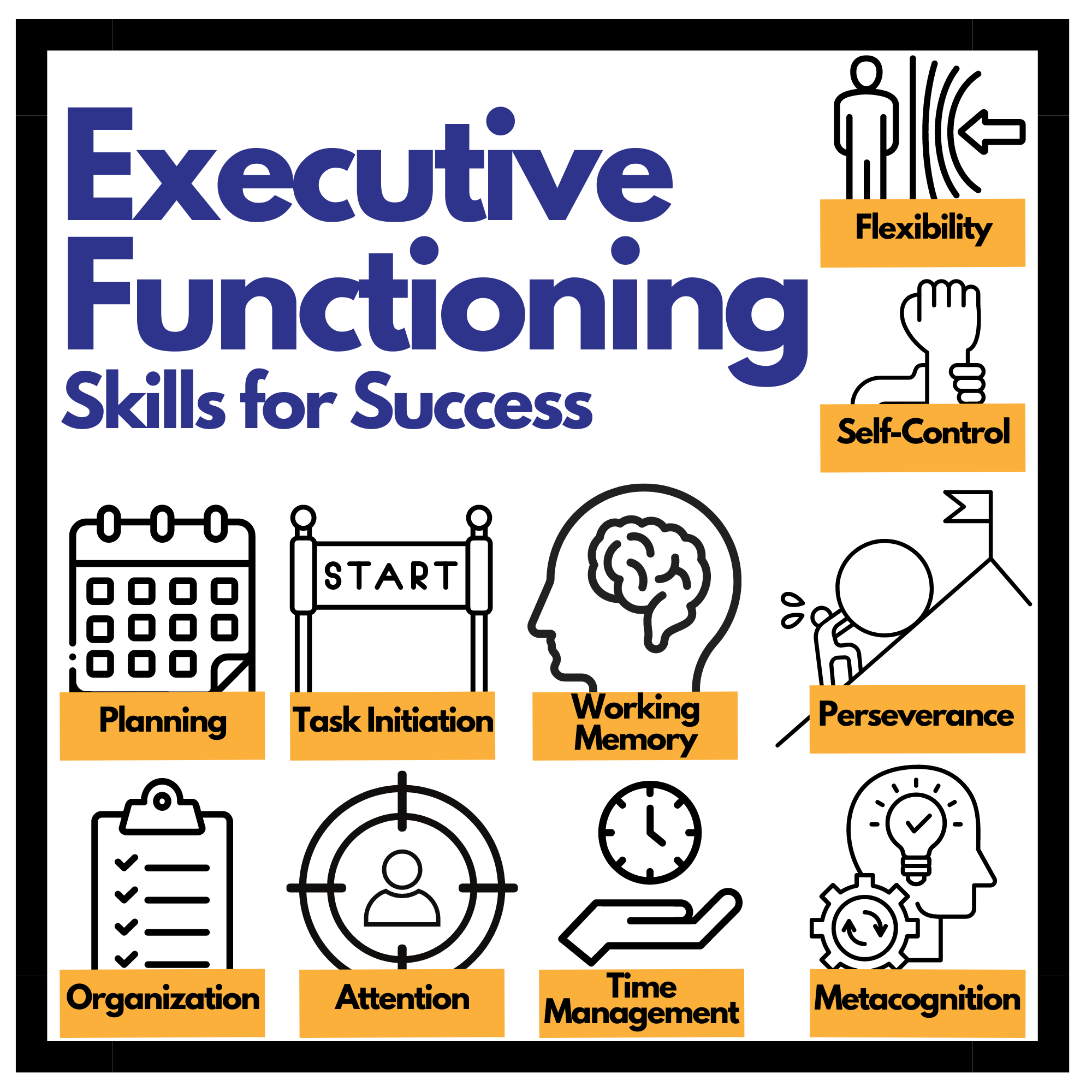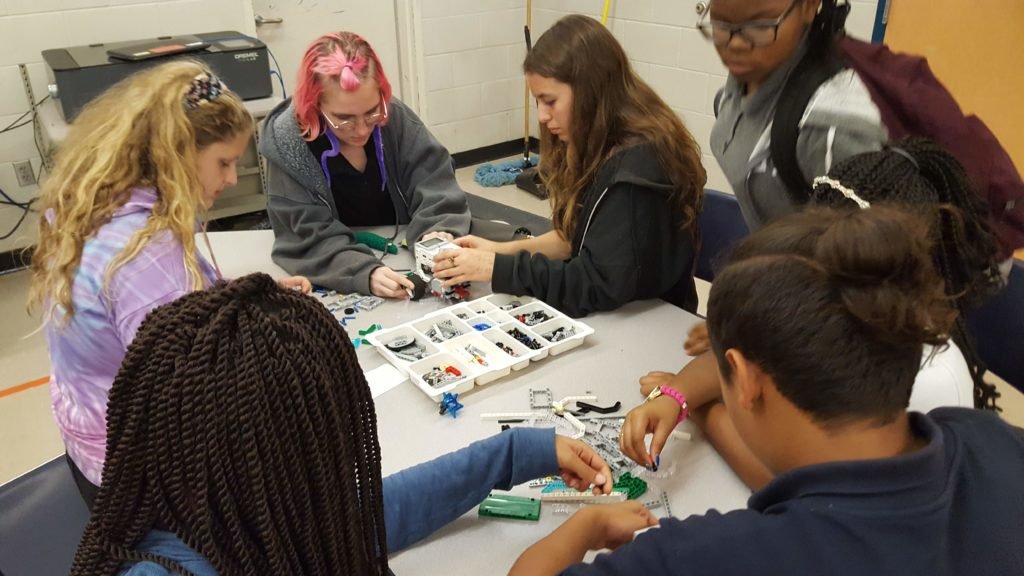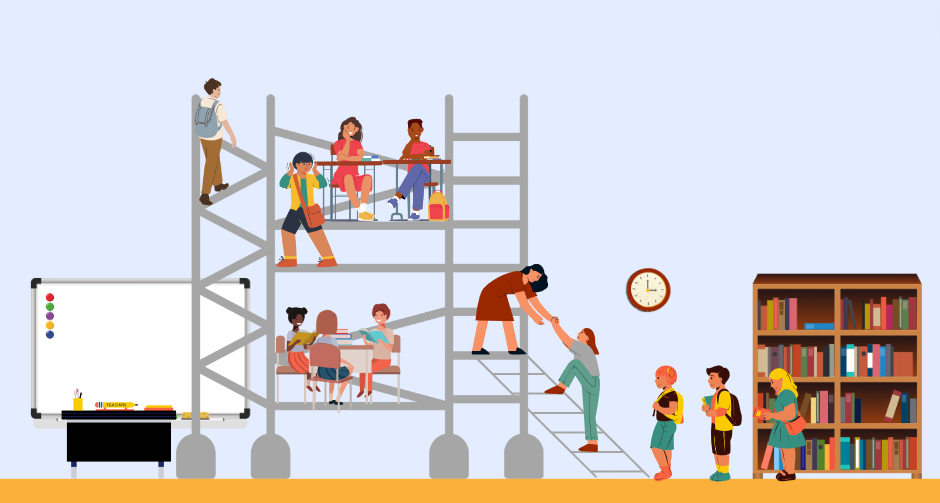
Elevate Student-Centered Learning with the Art of Scaffolding
Written by Kiara Klein, Director of Programs, Scoutlier by Aecern
In the realm of education, there are always unpredictable moments; the meticulous plans of teachers sometimes take unexpected turns and detours. Many educators know the horrors of having their well-thought-out lesson plans go awry somehow.
Picture this: A teacher you know spent hours or even days creating a lesson to teach a new concept. On the day of the lesson, the teacher lays out the necessary materials with great anticipation—she can see it now, all her hard work coming to fruition.
She explains the directions and allows students to ask clarifying questions. Then it’s off to the races, as the students begin working while she walks around the room to facilitate learning. One student raises his hand. Sporting a furrowed brow and puppy eyes, he explains he doesn’t know what he’s supposed to do. A few seats away, another hand shoots into the air. This student is lost because she skipped to the middle of the assignment, missing several steps that would make her successful.
As the teacher begins answering questions and re-explaining the lesson, hands are popping up all over the room.
She glances around the classroom to find that only five students are on task. The remainder of the classroom looks confused or frustrated. After an inordinate amount of time, the teacher gets everyone back on track except four who require extra prompting. She pulls those students together to break the lesson down into individual tasks for them, requiring all of her extra attention.
At the end of the day, the teacher is exhausted and feels the same feelings of frustration her students felt earlier that morning. What went wrong? She has no idea what each child achieved because they are in so many different places in the lesson.
The teacher decides that the activity wasn’t worth the hassle and vows to never teach the lesson again.
The Importance of Effective Teaching Strategies
This story serves as an important reminder of the crucial need for effective teaching strategies, proper preparation of the learning environment and sustainable delivery methods, all of which must withstand unexpected disruptions and contribute to dynamic and engaging learning.
In the face of the challenge of creating an effective learning environment in all situations, the reigning champion remains one: accessible scaffolding lessons. Easily accessible scaffolded lessons not only support teachers in their planning but also elevate the student-centered learning experience. Let’s delve into the world of scaffolding, and explore the approach, benefits, and transformative impact it can have on educators and students alike.
What is Scaffolding and How Does it Work?
The technique of scaffolding, first emphasized in Lev Vygotsky’s educational theory Zone of Proximal Development (ZPD), stresses the crucial role of the teacher in a student’s learning journey. The process involves breaking down complex concepts into more manageable steps and guiding the students along the way.
Similar to the scaffolding used in construction, these supports are meant to be temporary. The goal is to provide structured support while students acquire new skills but should gradually diminish in support as students get closer and closer to mastery and competency. This approach allows students to receive just the right amount of support as they reach higher levels of understanding, independence and competence.
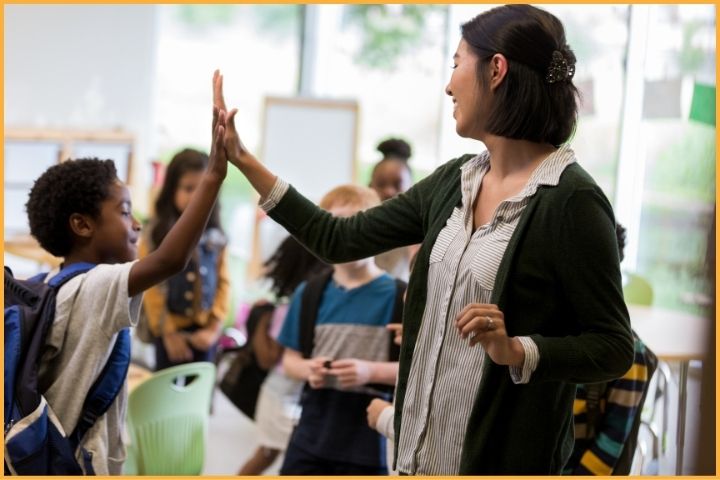
The Teacher’s Role in Scaffolding and its Components
Teachers play a pivotal role as facilitators in the scaffolding process. By understanding their students’ abilities and knowledge base, they can provide the right amount of support to propel them forward without the fear of overwhelm or lack of understanding.
But what does scaffolding look like in a practical application? Scaffolding can look like providing support in a group exercise before letting students work on a lesson independently. Simply, the teacher explains the assigned task or lesson and then assigns small groups to work together. During that timeframe, the teacher can assess understanding of the room by asking each group probing questions. After the conclusion of the group work, students are encouraged to work independently (if the class is ready, that is).
Scaffolding comprises various elements, including modeling, response prompting, peer supports, and corrective feedback. These elements collectively create a supportive framework that allows students to grasp concepts within their ZPD and gradually take charge of their own learning.
Benefits of Scaffolding
One benefit of scaffolding lessons is that there will be an improvement in classroom behavior. When students feel supported, they tend to ask the right questions during lessons so that they can gain a deeper understanding of the material. Overall, this makes them more involved in the learning process and more deeply engaged with the content.
When the teacher can take a step back and take on the role of a facilitator rather than strictly an instructor, this puts the students in the driver’s seat. Students are not only more inclined to ask the right questions, but they are also more likely to encourage their classmates in group sessions and are more empowered to set their own learning goals.
Scaffolding challenges students to learn harder material. Scaffolding
When students more deeply understand a lesson due to scaffolding, this lends itself to long-term learning gains. The lesson will make more of an impression on the students, allowing them to carry this newfound knowledge further and build upon it more easily.
Scaffolding lessons can also be used to provide targeted support to address individual learning needs. One of the ways this can be accomplished is through flexible grouping. This allows teachers to target their lessons to small groups or individual students, providing support at the appropriate level.
Overall, scaffolding is a powerful tool for providing individual support to meet the diverse needs of each student.
Scoutlier Scaffolds the BRIM of Success
Scoutlier, our online learning platform, is the solution to creating effective scaffolding lessons that are easily accessible. No more faltering communication or substitute teachers left without a clear lesson plan.
All you have to remember is BRIM:
- Break into steps
- Resources for the task
- Individual pace
- Make connections
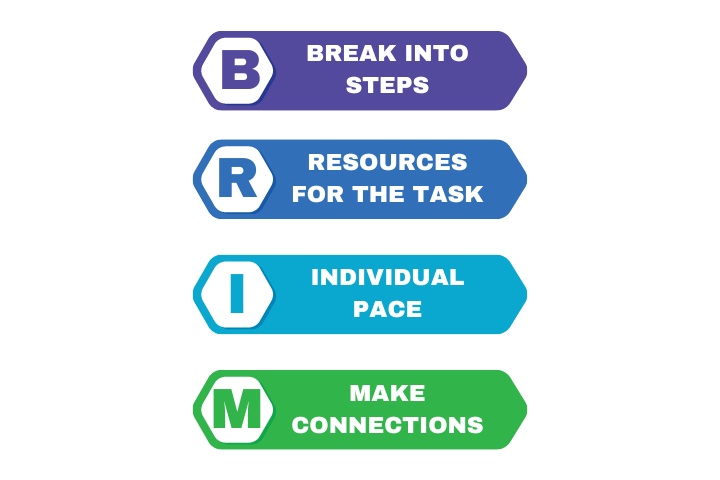
When building lessons, Scoutlier creates a natural flow for scaffolding lessons for students. Lessons are built task by task, step by step. Teachers control the order of the lesson, guiding students as they build their knowledge throughout the lesson, keeping the learning goal in mind to achieve mastery of the content or skill.
In other words, you can craft lessons in Scoutlier with a step-by-step flow that will guide your students toward mastery by building upon their knowledge gradually and steering their learning journey with individualized instruction that meets the needs of each of your students.
Sign up for your FREE teacher account to remove learning barriers and help unleash your students’ potential with a learning platform that allows you to scaffold all of your lessons.
RESOURCES
